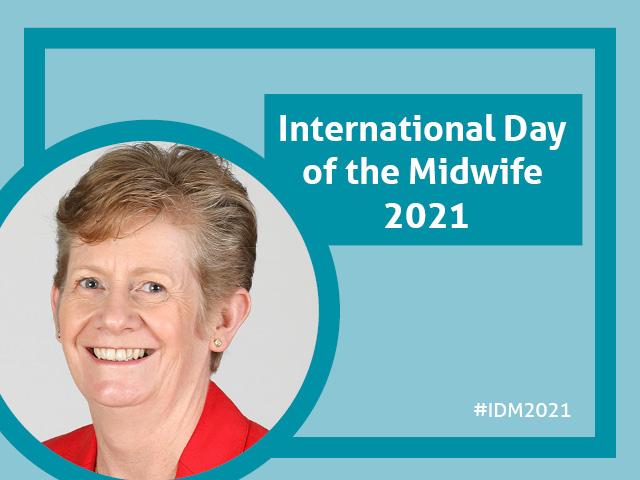
“There are still so many unanswered questions” - how research midwives are paving the way to best practice
4 May
Today, 5 May, marks International Day of the Midwife. This year’s theme is “Follow the Data: Invest in Midwives”, with a focus on supporting quality midwifery care around the world, improving sexual, reproductive, maternal, newborn, child and adolescent health in the process. There are currently 21 reproductive health and childbirth research studies open in Wales, overseen by Lead Research Midwives across six of the Health Boards.
We spoke to Professor Julia Sanders, Health and Care Research Wales Specialty Lead for Reproductive Health and Childbirth and Professor of Clinical Nursing and Midwifery, to find out why she believes research is the best investment into the midwifery community, and why it matters to her.
How did you make the decision to get into research?
What motivated me to get into research, and still motivates me today, is wanting to find out how we can improve care to women, babies and their families. Ensuring the women and babies in our care are central to the research we do will make sure we’re asking and answering the right questions, and in turn influencing care for the better.
Why does research matter to you?
Because there’s so much we don’t know! Midwifery care led the way in recognising the need for “evidence-based care”, but there are still so many unanswered questions. Post-natal care has always been a neglected area in research. For example, we’re only just starting to explore important topics such as incontinence after childbirth. Young, healthy women can experience these very difficult, distressing symptoms after childbirth, and yet adverts on the television suggest it’s normal, and to be expected. Urinary incontinence is not something that is high profile but it is so incredibly important to women, and something that further research could provide the answer too.
What do you see as the biggest reproductive health research breakthrough in your career?
I was very fortunate to be involved in one of the antenatal trials that looked at the effectiveness of changing patterns of antenatal care. Traditionally, since the 1940s until the 1990s, women were seen monthly up to 28 weeks, then fortnightly and then weekly. In the early 1990s, there were several trials that explored whether that pattern was necessary, and our work helped to inform the NICE antenatal care guidance which was published in 2003. This guideline covers the care that healthy women and their babies should be offered during pregnancy, and was the first ever maternity NICE guideline to be published. That type of work is yet to be undertaken for postnatal care.
Thinking of studies that have influenced maternity care, the Birthplace in England study was ground breaking. It established that for women with an uncomplicated pregnancy planning birth in a Midwifery Led Unit, where labour care is provided by midwives and maternity care assistants, is as safe for mothers and babies as planning birth in an obstetric unit. The study, published in 2011, transformed maternity care in the UK, with many more women now having the option to plan birth in a midwifery unit that provides an appropriate, relaxed, clinical environment for labour and birth.
Why do you think midwifery research has previously been low profile?
Honestly, I think care after childbirth (postnatal care), isn’t an area which attracts much medical interest. Obstetricians are very interested in the care of women during childbirth, but postnatal care has always been the ‘Cinderella’ of maternity care. As we don’t have a robust evidence base for the necessity of postnatal care, it’s very hard to defend it. If we don’t get that evidence, by doing more research, then we’re at risk of losing a lot of our community based postnatal care for women.
What is your ambition for the next ten years of midwifery research?
We need to address perinatal mental health, and wake up to the amount of psychological trauma and distress that women experience during childbirth. They might go home physically healthy, and with a healthy baby, but quite traumatised by what they experienced in the delivery suite. That would be one of my research priorities.
Also, we know from the work of our maternal mortality and morbidity reports that women and babies of black and ethnic minority groups are at increased chance of death and serious morbidity in childbirth. This is thought to be from a constellation of factors that come together – bias, difficulty accessing care, deprivation, and more. It is not straight forward to unpick, but it has to be a research priority.
Why would you encourage midwives to become involved in research?
Being involved in research challenges you in everything you do. It’s a great way to be exposed to new thinking, to challenge your own practice and beliefs, and also get to work with some fantastically bright people. Being part of a research team can mean involvement on various different levels, not just leading a study. You get to influence care for women and babies for the better, for the future.
Find out more about International Day of the Midwife on the International Confederation of Midwives website.